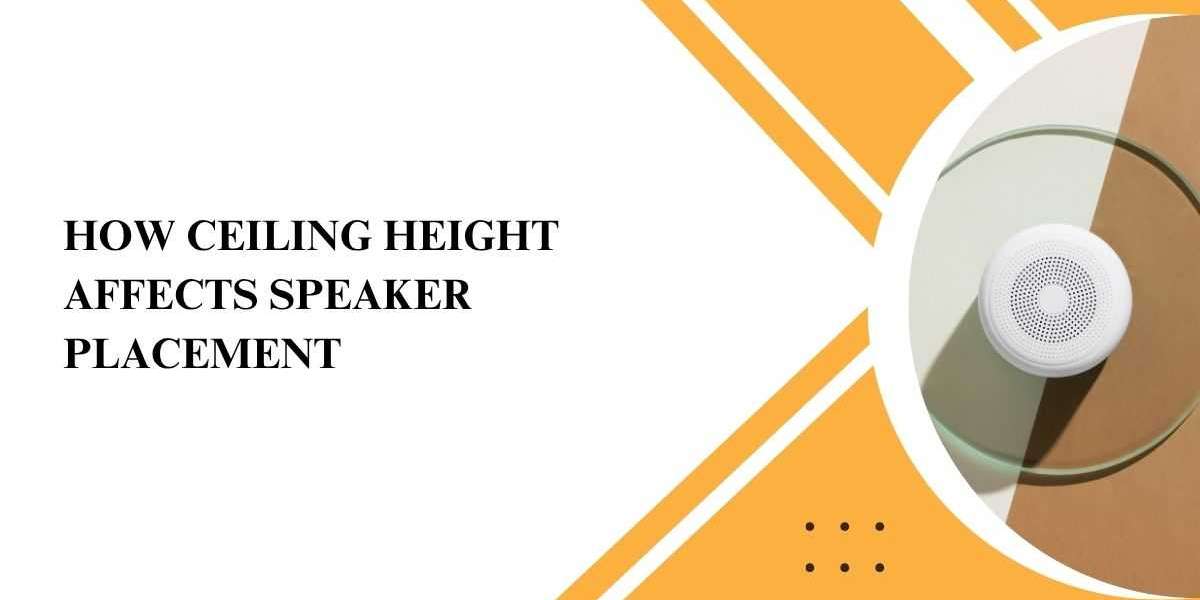Designing an effective audio system goes beyond just picking the right equipment. One of the most overlooked but critical factors is ceiling height. Whether in a home theater, office, conference room, or classroom, the vertical space above your head can dramatically influence how sound travels and how evenly it is distributed. This makes ceiling speaker placement a strategy that must account for more than just floor space.
To make smart and accurate speaker placement decisions, professional designers and AV integrators rely on tools like XTEN-AV. This cloud-based AV design platform helps visualize room dimensions, simulate audio coverage, and automatically calculate ideal speaker spacing. XTEN-AV ensures that ceiling height is factored into every decision, making it easier to plan for sound clarity and consistency in any environment.
Why Ceiling Height Matters
Ceiling height affects how sound waves move through a room. In a low-ceilinged space, sound travels a shorter distance before reaching the listener. In contrast, a high ceiling means sound may spread too wide or become unfocused by the time it arrives at ear level.
This difference impacts the number of speakers you need, their dispersion angles, and their installation depth. If not planned correctly, a speaker setup that works well in one room could sound weak or overpowering in another simply due to ceiling height.
XTEN-AV allows users to input the exact ceiling height of a room, helping designers and installers plan more accurately. From there, they can select speakers that suit the space and simulate their performance in real time.
The Science Behind It
Sound disperses in waves from the speaker cone, and each speaker has a defined coverage angle. Ceiling height determines how wide that angle will spread across the floor. If the ceiling is too high and the speaker has a narrow dispersion angle, the sound may not reach the intended area, leaving dead zones in the room.
On the other hand, if the ceiling is too low and the speaker has a wide dispersion, it may result in overlapping sound fields and create echo or muddiness.
With XTEN-AV, you can select speakers with the appropriate dispersion characteristics based on ceiling height and simulate how they will perform in the space before installation.
Low Ceilings (8 to 10 Feet)
Rooms with low ceilings are common in homes, small offices, and classrooms. These spaces require careful planning to avoid overwhelming listeners with sound.
Tips for low ceilings:
Choose ceiling speakers with moderate to narrow dispersion angles.
Place speakers at equal intervals to avoid overlapping sound.
Keep speakers at least two feet away from walls to prevent reflections.
In such setups, fewer speakers are usually needed. XTEN-AV can help map out the room, recommend spacing, and ensure balanced sound coverage with minimal equipment.
Standard Ceilings (10 to 12 Feet)
This ceiling height is ideal for most audio installations. It provides enough distance for sound to spread naturally and supports flexible speaker layouts.
Best practices:
Use full-range ceiling speakers with 90 to 120-degree dispersion.
Space speakers 6 to 10 feet apart, depending on room size.
Use XTEN-AV to test different grid patterns for even coverage.
In these rooms, ceiling speaker placement is typically aligned along key listening zones like seating areas or conference tables. XTEN-AV’s layout tools help you align speakers with furniture placement and determine wiring routes at the same time.
High Ceilings (12 Feet and Above)
Tall ceilings are found in auditoriums, atriums, large meeting rooms, and retail spaces. While they create a dramatic architectural effect, they pose unique challenges for audio design.
Challenges include:
Sound may dissipate before reaching the listener.
Ceiling speakers may require higher output or tighter focus.
Echo and reverberation can occur in untreated spaces.
Solutions:
Use directional ceiling speakers or speakers with adjustable tweeters.
Consider using pendant speakers that hang closer to the listening plane.
Install more speakers in a tighter grid to reduce drop-off.
XTEN-AV supports all of these strategies. You can input a ceiling height of 20 feet or more and test different speaker types and mounting options. The platform also accounts for acoustical treatment, which is often needed in high-ceiling spaces.
Sloped or Vaulted Ceilings
Irregular ceiling designs such as slopes or vaults further complicate audio planning. The angles can redirect sound in unpredictable ways, and standard placement rules may not apply.
What to consider:
Match speaker angle to ceiling slope for optimal sound direction.
Avoid placing speakers at points where the ceiling changes direction sharply.
Use directional or angled ceiling speakers when needed.
XTEN-AV lets you model sloped ceilings in your room layout. You can preview how sound will travel along angled surfaces and make adjustments to speaker choice and orientation accordingly.
XTEN-AV Tools for Height-Based Audio Planning
The reason XTEN-AV stands out in the AV design world is because it accounts for real-world conditions. Ceiling height is just one of many variables XTEN-AV allows you to enter and use to guide decisions.
Here is how XTEN-AV supports ceiling speaker placement based on height:
Input exact room and ceiling dimensions for each space.
Choose from a library of ceiling speakers with specs like dispersion angle and mounting depth.
Use built-in simulation tools to test coverage at different ceiling heights.
Automatically generate speaker spacing and wiring diagrams tailored to the height of the room.
Collaborate in real-time with teams and clients to review and finalize designs.
Whether you are working on a home theater with an 8-foot ceiling or a museum exhibit space with 25-foot vaulted ceilings, XTEN-AV helps you make informed decisions and deliver superior audio performance.
Final Thoughts
Ceiling height is more than just an architectural detail. It directly influences how sound is delivered, perceived, and enjoyed in any space. Poor planning can result in uneven audio, wasted equipment, and dissatisfied users. Proper ceiling speaker placement requires an understanding of how ceiling height affects dispersion, coverage, and acoustics.
For AV integrators, consultants, and even DIY audio enthusiasts, XTEN-AV offers the tools needed to bridge the gap between architectural design and sound performance. By visualizing the impact of ceiling height in advance, you can create a system that delivers crisp, balanced audio exactly where it is needed.
So the next time you look up at a ceiling, think beyond aesthetics. Think about how that height shapes your sound and how XTEN-AV can help you get it just right.
Read more: https://ivebo.co.uk/read-blog/144268








